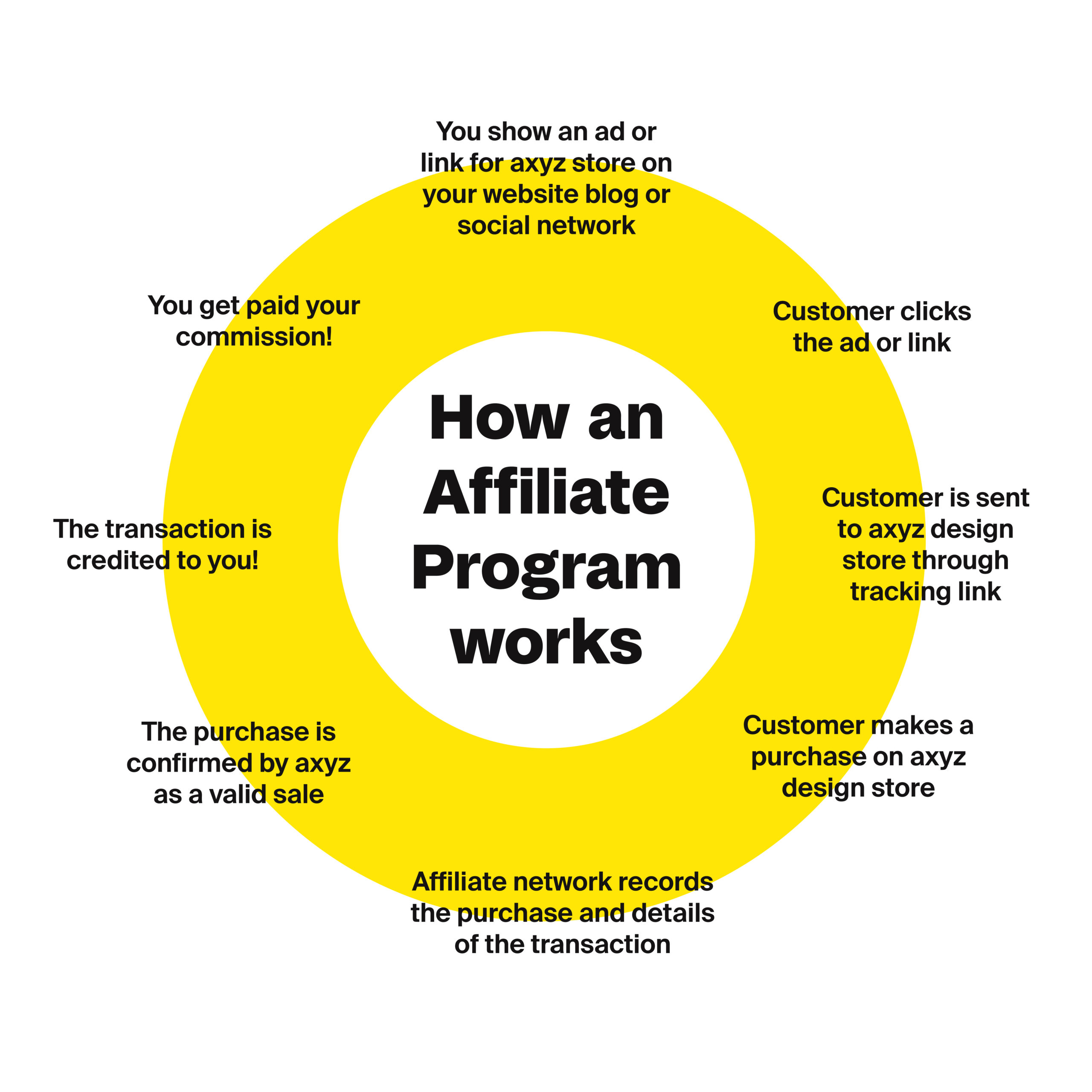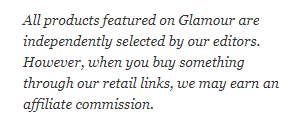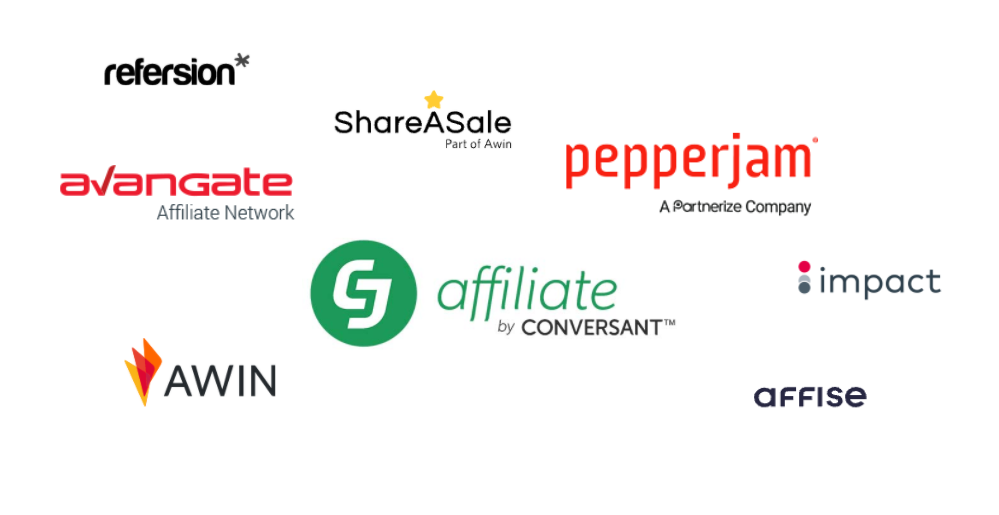If you’re in the digital marketing space, you know there’s one thing you must always be: agile. Big tech makes monumental changes more frequently than we’d like to see and sometimes, these are easy to overcome. Google algorithm update? No sweat!
Other times, especially now, it’s not so much the case. With the most recent iOS 14 & 15 updates and App Tracking Transparency, even being agile and nimble doesn’t seem to be enough to overcome the loss of data. About 94% of iOS users have opted out of tracking on Facebook, and it’s got digital marketers sitting in their offices like:

That is why being agile isn’t always enough; you need to be diversified as well, and there’s one area of digital marketing that for the most part won’t ever succumb to the changes of Google or Facebook: Affiliate Marketing.
What’s Affiliate Marketing?
Affiliate marketing is the process by which an affiliate earns a commission for marketing another person’s or company’s products. When a user clicks an affiliate link and makes a purchase within the cookie window, the affiliate earns a piece of the profit from each sale they make (aka commission). The sales are tracked by links with specific URL parameters from one website to another through an affiliate platform, and the affiliate is paid out through the same platform.

Go back 10 years ago and the affiliate space was dominated mainly by coupon, loyalty, or niche blog sites (think Mommy Bloggers). However, after mass digitization, this space evolved into a beautiful combination of PR and revenue sharing, assisting brands in generating awareness, reach, trust, and of course, revenue.
Just as we’ve seen the recent marriage performance marketing & branding due to data loss in digital marketing, we see content sites pivoting offline to combine a type of performance branding as well within their content.
As large magazines transitioned from paper to digital copies, they started heavily monetizing their content beyond traditional advertising. Now, when you find an article from your favorite magazine online ranking the best cameras of 2021, you can safely assume they are making a commission for every sale they bring to the online store – in fact, they are legally bound to disclose if they are.

If you told an affiliate marketer 5 years ago that Glamour Magazine would be in the affiliate space, they probably wouldn’t believe you. But, now that this is the current reality, there is a huge opportunity for brands to get featured placements at no upfront cost to them in places they would have had to pay over $10,000 for previously. Imagine getting a placement on Glamour for just a commission of say 20% of the sale! We are at the forefront of an entirely new form of digital marketing!
This sounds great, what’s the catch?
While yes, it’s fairly easy to set up, one thing about affiliate marketing most people overlook is that it’s more than creating an ad, targeting an audience, setting a budget, and letting it run its course. Affiliate marketing requires marketers to take on more of a salesperson role and build relationships with content sites, influencers, large media corporations, coupon, and cashback companies. But believe us when we say the juice is worth the squeeze!
One evergreen placement on a large content site has the ability to drive consistent revenue for years. I’ve personally worked with a client in a restricted space who generated 40% of their overall revenue as a business through an affiliate link that consistently ranked #1 on Google for 3 years.
So where do I start?
First and foremost, you need to make sure your website, product, and team can sustain an increase in site traffic and orders. This means you have a proper funnel that users can navigate, your customer service team has a proper process, and you’ve crossed all your t’s and dotted all your i’s when it comes to logistics. Why is this so important? Affiliates do not want to waste their time driving precious traffic ($) to a website that doesn’t convert or that will have a high refund rate. If they see they are driving clicks without sales, they’re going to drop you faster than a bad habit.
Once you have all that in order, it’s time to organize your commission structure. What are you going to offer the affiliate to entice them to market your product? The best place to start is vetting your competition. Most of the time you can do this by navigating to their website and finding their affiliate landing page in the footer or sitemap. Find out what the average commission rate is in your vertical and try to match that or even better, go beyond it.
It’s very pivotal to make your structure of affiliate commission something that makes sense for your product. If you are a software company, it’s probably not going to make sense to offer a percentage rate to your affiliate; it might make more sense to offer a fixed cost per lead. Here are a few common types of affiliate commission structures:
- CPA = Cost Per Acquisition
- CPL = Cost Per Lead
- CPS = Cost Per Sale
- PR = Percentage Rate
- TR = Tiered Rate
CPL & PR are by far the 2 most common types of commission structures you’ll come across. If you’re in the consumer packaged goods world, most likely the only type of commission being offered is a percentage rate. In some rare cases, you may run into tiered commission.
On top of your commission structure, you’ll want to make sure to include a bonus offer for an affiliate’s first sale. A $50-$100 bonus is industry standard, but it’s really whatever makes the most sense for your business given your margins.
Next, you’ll need to create your offer. What incentive will you be able to equip affiliates with to drive clicks and conversions? If you are selling a SaaS product, maybe it’s a free month. If you’re a D2C makeup company, perhaps it’s a 10% discount off a user’s 1st purchase. Again, vetting your competition’s offer is never a bad idea as it gives you some leverage to work with.
How do I find affiliates, track them, and pay them?
When it comes to affiliate onboarding and tracking, you have a few options. You can either choose to create your own platform free from network fees, banner restrictions, or publisher variety; however, that is a very heavy lift for any tech team and can be quite complex. A less complicated version of this would be utilizing an open-source platform such as Post Affiliate Pro, iDev, or Cake. The only downside to this is that you will not have the ability to utilize an affiliate recruiting tool, and you will have to find the contact information manually for any affiliate you wish to onboard onto your program. If this is your first time in the affiliate world, it’s best to use an already existing platform with plenty of affiliates to recruit into your program.
There are HUNDREDS of affiliate platforms out there but have no fear because as experienced marketers we have suggestions for the best platforms to use based on your budget and your goals. The main things to pay attention to when vetting platforms are what the integration fees look like, what is the network fee per sale, and how many quality affiliates already exist in the platform.
If you have enough budget to pay a couple of thousand dollars for an integration fee and product license, we suggest Impact. This is a powerhouse when it comes to affiliate marketing. Their Partner Cloud allows brand representatives and marketers to completely automate the process of recruitment and scaling. But, this comes at a high cost and isn’t meant for every company.
If you have less to spend on integration fees, go for CJ, and if you’ve got just a few hundred dollars in your budget, go for Shareasale. The most important thing here is to choose a partner that has high-quality affiliates and super affiliates like Skimlinks, Honey, RetailMeNot, Ibotta, and Meredith. The point of paying to use affiliate software is the opportunity to connect with quality publishers, so you’ll want to use something that truly provides that for you.

Once you decide which platform to use and begin onboarding, you’ll go through a fairly easy integration process to connect your site with the platform. During this process, you’ll be required to upload things like company bio, logo, banners, affiliate agreement, etc. You’ll want to make sure you have all these things ready beforehand to streamline the process. The entire integration process usually takes no more than 2 weeks, and from there that’s when the fun starts.
Okay, so I’m in! What’s next?
Once you’ve integrated into the platform and gained access to the backend of your program, it’s time to set up things like email templates, text links, and banners. Setting up a recruitment template is of utmost importance to streamline that process. Otherwise, every time you go to recruit a publisher into your program, you’ll be forced to write a new message. Things like that seem small, but they make a huge difference in the time it takes to grow a program.
Next, head to the links section of your program, and create text links for your top products and landing pages, or whichever pages you already know to drive the most conversions. Most publishers nowadays have software that scrapes all the affiliate programs they are part of for new text links, coupons, or banners, and they predominantly solely use the text links provided for landing pages they’ll direct users to. As a merchant, you have more control over your affiliates than you’d think, so make sure you’re methodically choosing your links rather than just adding links to every page on your site.
Now it’s time to recruit affiliates into your program. You’ve got a bonus incentive set up, a template created, banners to provide your affiliates with, and a kickass commission structure. In this space of digital marketing, there’s a saying that rings true, “If you build it, they will come.” It can take up to 90 days to really start seeing traction from your program, but a well-organized program for a solid website will not go overlooked for too long in this space.
However, recruitment is still vital to the health & success of your program. You’ll want to ensure you’re inviting quality partners in your program that won’t send spam traffic or fraudulent orders. The four main types of affiliates are the following: coupon/cashback, content, influencers, and performance marketing. Having a mix of all four will be pivotal in the success of your program. If you only have coupon or cashback affiliates, the only type of customer you’ll acquire is someone looking for a deal, and the probability they’ll return is low. If you only have content publishers in your program, you’ll most likely see sporadic traffic dependent on when you get a feature or placement. Only having influencers just limits the ability to scale, and only having performance partners can’t work because they rely on already existing site traffic to do their work.
There’s a few affiliates you’ll want to immediately onboard:
- Honey
- RetailMeNot
- Ibotta
- Skimlinks
- Wickfire
- AddShoppers
- Cybba
- Ziff Davis
- Meredith
- Rakuten
- Piggy
- Prodege
- Giving Assistant
- Slickdeals
Make sure you prioritize inviting these publishers into your program and following up. If you see a publisher not responding to your invite, reach back out and remind them why your program rocks, and ask if there’s something about it creating hesitation. If you notice they’ve accepted your invite but haven’t driven clicks or sales, reach out and remind them about the bonus and offer things like custom content, banners, or deals no one else will have. If there’s one thing affiliates love, it’s exclusivity.
OK, so I’m done, right?
Definitely not! Affiliate marketing is an ongoing process that isn’t just a set-and-forget type of vertical. Your affiliates rely on fresh offers and content to continue to drive traffic, and if they feel they aren’t getting the support needed from you, they will begin to place your competitors above you. To prevent this from happening, besides consistent communication, make sure you are also doing the following at least once a quarter to keep your affiliates engaged:
- Publisher Surveys
- Bonus Offers
- Contests
- Temporary Commission Increases
Keep up communication, keep offers fresh, keep incentives competitive, and you’re bound to see success from your program.
So what are you waiting for? Go forth and recruit!







